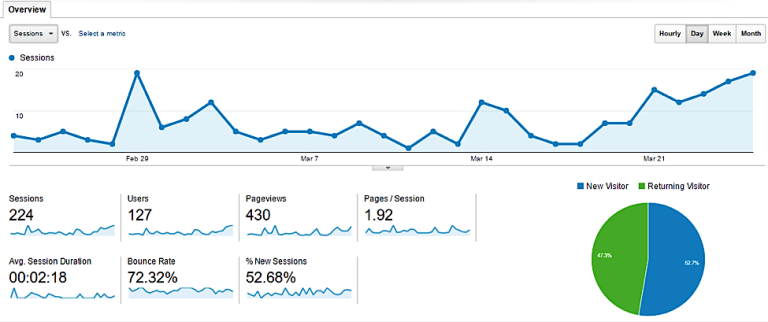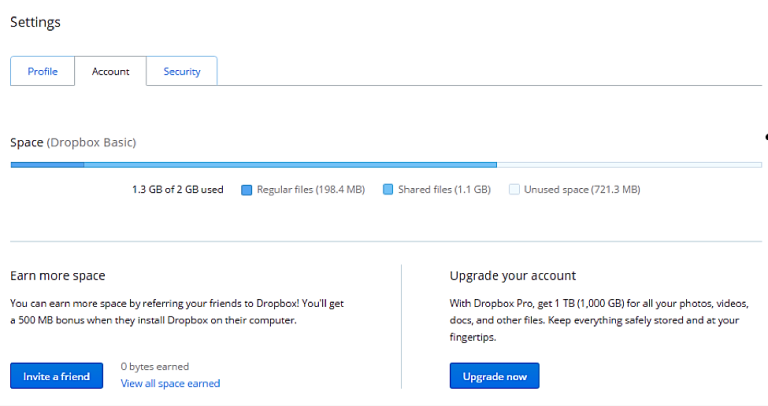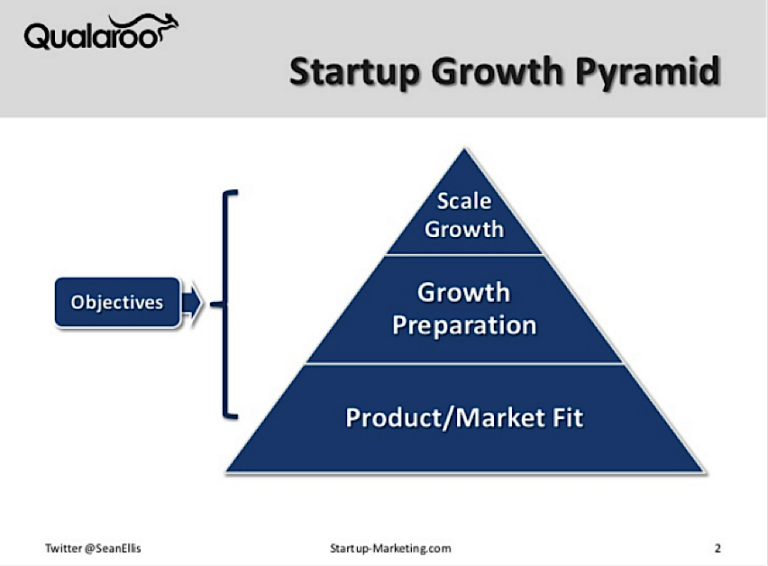
If you’ve heard the term “growth hacking” and wondered what it means, you’re not alone. This concept has absolutely exploded over the past few years.
As interest in this technique increases, more and more companies are looking to integrate the practice to achieve their goals.
But before this can happen, it’s important to understand what it means.
What Is Growth Hacking?
Growth hacking is a term without a clear-cut definition. Even growth hackers themselves don’t exactly know how to describe growth hacking. A quick Google search can result in dozens of articles on the topic, each with a slightly different take.
Growth hacking, in the simplest sense, uses “hacks” or shortcuts that bypass traditional marketing approaches to drive business growth.
Although “hacking” can come with a bad reputation, this term doesn’t necessarily refer to someone sitting at a computer writing code. And it definitely doesn’t mean using shady marketing tactics. The focus of growth hacking is to grow a user base for a product and retain this base using creative, unconventional methods.
This concept has been around for a while, but not exactly in these terms. Back in 1996, the web-based e-mail service Hotmail grew their user base from 0 to 1 million in 6 months. Within 17 months, they had 12 million users. The hack? An e-mail signature including the line “P.S: I love you, get your free e-mail at Hotmail.”
Growth hacking isn’t marketing, at least in the traditional sense.
Traditional marketing involves print advertisements, television ads, telephone marketing, direct mail, etc. These tactics are great for big companies (think Super Bowl commercials), but not so useful for smaller, Internet-based ones. Not only are traditional marketing methods costly, they aren’t exactly the best way to reach people all over the world who may benefit from a product or service.
This concept is very much in its infancy. In fact, the first use of the term “growth hacker” was by Sean Ellis back in 2010 — just 6 years ago. The advent of growth hacking is entirely driven by the surge of the Internet and the nature of Internet products.
People interact with products online differently than they do in person — like purchasing shoes on the ‘net versus at a physical shop. Growth hackers are able to understand this behavior and use it to their advantage.
To summarize broadly, growth hacking involves finding creative, underused ways to get the word out. It’s all about using a product in a way that fuels interest and drives traffic.
Now let’s delve into how growth hacking works.
Who Is a Growth Hacker?
To understand growth hacking, let’s talk about what it means to be a growth hacker. What makes someone a growth hacker and not a marketer?
First, growth hackers are (perhaps obviously) obsessed with growth. That is their main goal. To achieve this goal, they often have a combination of skills and embody several aspects of a business such as marketing, engineering, and product development. Instead of keeping each part in its own little box, growth hackers have an integrated approach.
Here are some important characteristics of growth hackers:
- Creativity – Growth hackers are able to design creative solutions that are underused or have possibly never been used. They think out of the box and aren’t constrained by the marketing norm.
- Engineering – They are often coding wizards able to engineer new features to drive a product, but don’t necessarily have to be. For example, growth hackers at Airbnb reverse-engineered a feature to post listings to Craigslist. This helped gain 11 times more listings in just 3 years:

- Analytics – Growth hackers love data and use analytics as a major source of research to make important decisions concerning growth. They may look at metrics like subscribers, leads, new users, etc. to understand the growth rate of a business.
The Approach Is Everything
Maximizing growth is all about the approach. Approaching a business with growth in mind is a lot different than approaching it with key performance indicators (KPIs) like revenue or product downloads in mind. The first approach is growth hacking, while the second is marketing.
Successful growth hacking means focusing on certain aspects of a business. According to Quicksprout, there are 3 phases of the growth hacker’s funnel:

1. Get Visitors
The first step, and the largest part of the funnel, is to get people to visit your website or app. At this stage, they’re just checking out what you’re offering, but haven’t committed to you yet. They might be looking around for the best product, researching prices, visiting competitors.
2. Activate Members
Next, you need to take these visitors and “activate” them. This is a testament to how well visitors are converted into customers or even followers. This can mean making a purchase, subscribing to a mailing list, or becoming a member of your site.
3. Retain Users
Finally, you must retain members and turn them into long-term users. This is the ultimate goal of growth hacking. Retained users are more likely to engage with a brand over time, share with friends, and continue to use a product.
For successful growth hacking, every piece of this funnel must be there. Each step is as important as the others. Without visitors, you can’t have activated members. Without activated members, you can’t hope to retain users. They all work together.
Tactics of Growth Hackers
Now that we know the characteristics of growth hackers and their approach, what specifically do they do? What are some common “growth hacks” used?
In essence, the definition of a “growth hack” is broad and new definitions are constantly evolving. Remember, finding new ways to grow a product is the basis of growth hacking. Growth hackers that are able to leverage out-of-the-box thinking tend to come out on top.
There are many ways growth hackers operate. Here are some of the most common:
- Viral Acquisition – This involves built-in product features that make a product naturally “viral.” This means there’s something about the product that makes many users want to share it, thus generating new users. Viral acquisition can equal massive growth when done right.
- Content Marketing – Content marketing is used to affect growth at a couple different levels. It can increase site traffic (get more visitors) and turn visitors into users (activate visitors). This is done through content that increases brand awareness (blog posts, infographics, video, Slideshares, e-books, etc.) and encourages social sharing. In addition, adding content upgrades can increase e-mail sign-ups by 62%, so it’s a good way to build a user base fast.
- E-mail Marketing – This tactic isn’t generally used to increase traffic or turn visitors into users, as recipients have already expressed interest in a product. E-mail marketing helps growth hackers engage existing users and possibly refer new users.
- Search Engine Optimization (SEO) – SEO helps drive traffic to a site. Search behavior is extremely telling. By understanding and optimizing how searchable a website is, businesses can get a product in front of people who are going to be interested in it.
- A/B Testing and Analytics – The wealth of analytic tools available allows growth hackers to generate data and perform A/B testing to help determine what works and what doesn’t. Growth hackers aren’t content with knowing something didn’t drive growth, so they use data to understand why. Google analytics is an example of a tool that gives growth hackers important insight:

As you can tell, these tactics span a variety of areas and not every tactic is specific to marketing. Some involve at least a basic understanding of search algorithms (for SEO). Others involve coding and engineering (viral acquisition) or analytics. While a growth hacker doesn’t need to do it all, they often wear many hats.
How Businesses Like Dropbox Use Growth Hacking
The best way to understand what growth hacking is and how to leverage it is by looking at companies that have successfully used growth hacking. Some of the best online businesses (Facebook, Twitter, Instagram, PayPal, Airbnb) have gotten to where they are because of this technique. One good example to delve into is Dropbox.
Dropbox has spent very little on advertising compared to its net worth. This is the first sign that growth hacking is at play, as it bypasses traditional marketing methods.
In its startup days, Dropbox took advantage of word-of-mouth and incentives to create a rapidly growing user base. Users were encouraged to refer friends and there was a sign-up storage bonus for both sides. The refer-a-friend function made it irresistible for existing users who enjoyed the product to spread the Dropbox love.
Today, you can still earn free space by successfully referring friends to Dropbox, as this screenshot of an account shows:

The company invested in analytics to track the effectiveness of this growth hacking experiment. What did they find? It worked big time. Through this one growth hack, Dropbox increased signups by 60%.
In 15 months, they grew to 4 million users. The beauty of growth hacks, like this one, is that once they’re set up, they pretty much do the work on their own. They don’t require a constant stream of marketing dollars. This makes the cost of acquiring new customers closer to $0.
Going Viral
Making it easy for users to refer friends and share files via this platform gave Dropbox the virality factor.
As mentioned earlier, virality is an important tactic for growth hackers. Virality doesn’t only involve content that is constantly shared; it can also be specifically designed into a product to allow that product to market itself. In this way, growth hackers are “engineering virality.” They don’t have to create specific content to drive awareness, as that’s already taken care of in the product.
Many growth hacking methods, including virality, have a finite lifespan. They are designed to create an explosion of growth, and like real explosions, the dust will eventually settle. So although that viral infographic you created might generate a large amount of traffic now, it might eventually grow quiet.
This is why growth hackers need several tactics in their arsenal. When one method fizzles or simply falls flat to begin with, growth hackers come up with something new and keep trying.
Tips for Growth Hacking
Even if you leverage some of the tactics earlier, you still might not succeed at growth hacking. This may` be because there are some very important factors missing. Here are some thoughts worth paying attention to:
Consider the Product
The best place to start when thinking about how to use growth hacking is to first consider the product that you’re offering. Is there a market for the product? Does the product fit in the chosen market? This is called “product-market fit.” The importance of product-market fit is shown in the base of Sean Ellis’ startup growth pyramid.

If the product isn’t something that people are looking for, growth hacking won’t work. Growth hackers like to have a hand in product development so that whatever is developed can almost market itself.
This quote from former growth hacker at Twitter, Josh Elman, sums up the relationship between growth hacking and product development eloquently:
“Growth hacking is a recognition that when you focus on understanding your users and how they discover and adopt your products, you can build features that help you acquire and retain more users, rather than just spending marketing dollars.”
Extend to Other Platforms
There are so many platforms out there that tons of users are already using. Social media platforms like Facebook, Twitter, and Instagram are goldmines for existing communities and these platforms represent almost unlimited potential for growth hackers. Growth hacking is all about using these platforms in new ways to grow a business.
Take for example, Pinterest. When you sign up for an account on these platforms, you are given the option to sign up via Facebook. This lets you find existing Facebook friends on Pinterest and helps retain users. Pinterest uses a platform like Facebook to its advantage.

Why Growth Hacking Is Perfect for Startups
Growth hacking can be used by any company of any size. Even established, large-scale businesses like Amazon use growth hacking techniques. This being said, growth hacking is particularly great for startups. Here’s why:
- Startups aren’t completely sure of their customer base. Because they’re not established, they’re not sure who exactly will want their product. Maybe there’s a hidden customer base that they’re not yet aware of. Growth hacking allows startups to quickly build a customer base and figure out exactly who wants what they’re offering.
- They need to increase growth exponentially. As unestablished companies, startups need to pull off major growth to survive. We’re talking 20% growth a month compared to 5% a year for corporations. Since the goal of growth hacking is growth, the two are a perfect pair.
- They must be creative and work with a tight-budget. Startups don’t have the money that larger companies have to spend on traditional marketing. This means that they have to be creative out of necessity. Creativity is the bread and butter of growth hackers. They’re able to come up with solutions that generate growth over time at little cost.
Conclusion
Growth hacking can sound like a magic bullet. Acquiring and retaining users without paid advertising? Sign me up! The results of growth hacking are what a lot of companies, especially startups, want. The truth is, it can involve a lot of trial and error.
Not every growth hack will work for every product. You might try hundreds of approaches before one sticks. Successful growth hackers are able to experiment constantly, using data to find openings and diving in headfirst.
By definition, growth hacking is constantly evolving. It’s all about taking advantage of underused opportunities. What might create massive growth today could quite possibly fall flat years from now. It’s definitely an exciting time for growth hacking.
If you’re ready to grow your business, Single Grain’s growth marketing experts can help!👇






